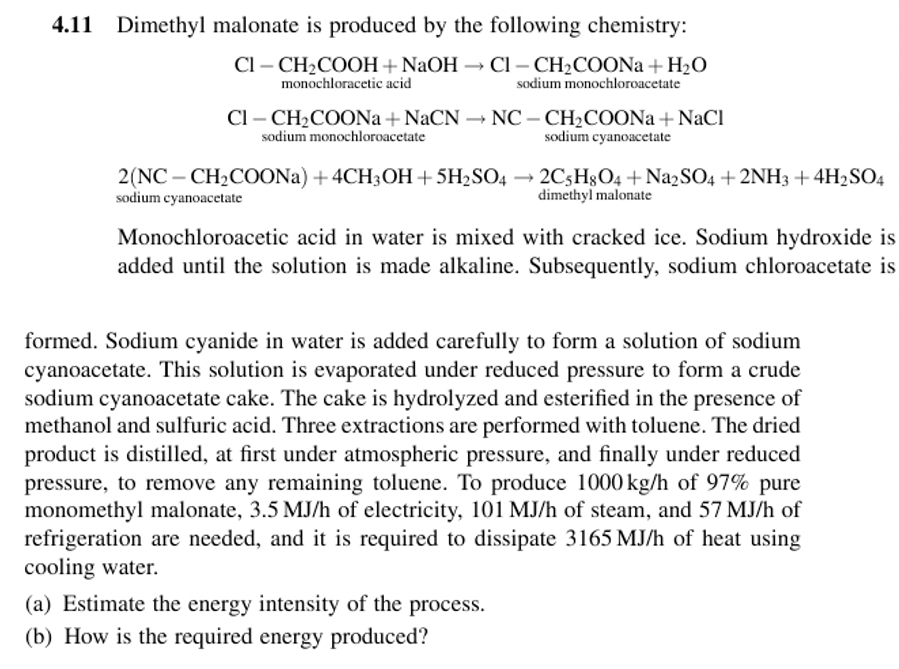Answered step by step
Verified Expert Solution
Question
1 Approved Answer
4.11 Dimethyl malonate is produced by the following chemistry: ClmonochloraceticacidCH2COOH+NaOHsodiummonochloroacetateClCH2COONa+H2O ClsodiummonochloroacetateCH2COONa+NaCNNCsodiumcyanoacetateCH2COONa+NaCl sodiumcyanoacetate2(NCCH2COONa)+4CH3OH+5H2SO4dimethylmalonate2C5H8O4+Na2SO4+2NH3+4H2SO4 Monochloroacetic acid in water is mixed with cracked ice. Sodium hydroxide is added

Step by Step Solution
There are 3 Steps involved in it
Step: 1

Get Instant Access to Expert-Tailored Solutions
See step-by-step solutions with expert insights and AI powered tools for academic success
Step: 2

Step: 3

Ace Your Homework with AI
Get the answers you need in no time with our AI-driven, step-by-step assistance
Get Started


